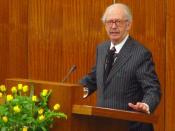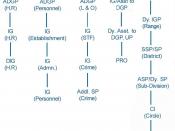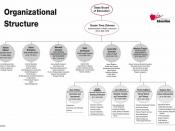Explain how formal organizations have evolved over the past century.
Evolution of Formal OrganizationsChange is everywhere and if a person does not adapt to change, they will die out. Paul Forbes says it best when he states that the future must be understood and that in order to not get swept away a company must be able to look at opportunities 10 years into the future (1992). History tells time after time of changes that occur from dress, culture, and more importantly the way that business conducts itself. Gone are the days of distinct formal bureaucracy within a company and present are the days of a new organizational structure that allows the company to represent the customer better. This paper will discuss how formal organizations have evolved over the past century while discussing the current trends in formal organizations. Discussion of the differences between small groups and formal organizations will take place as well as discussing how Micah's organization needs to become more open and flexible.
Summing up this paper will go over future predictions on how the organizational structure will be present, but to start it will be necessary to understand why this matter is so important.
The importance of this matter lies in that customers today are different from the customers of yester years and businesses need to be able to see and adapt to the needs of its customers. If an organization is selling the same product or service exactly how it did 30 years ago, the customers may not be too interested. What changes have occurred to cause these differences? Technology has changed the way organizations do business. Many companies are beginning to go paperless and rely more upon virtual records on a computer. The workplace will soon go paperless states Teresa Brady (1995). One...


